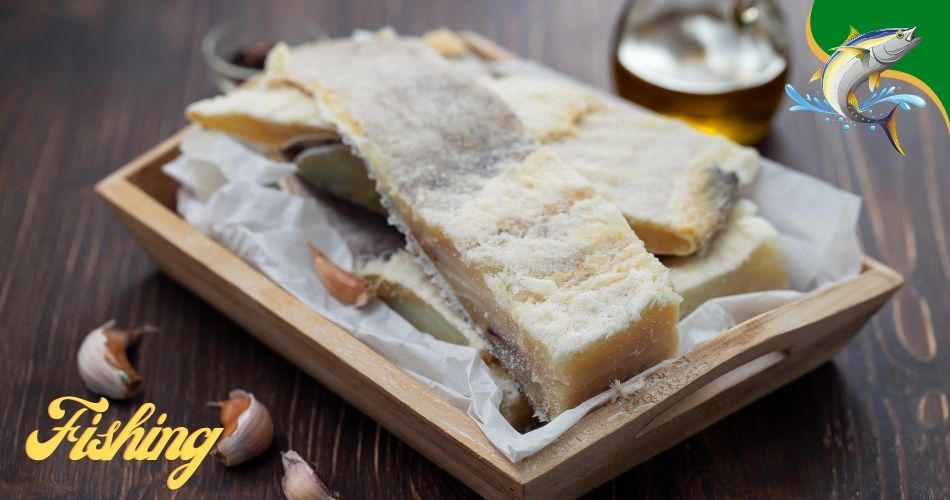Spring is a beautiful time of year. It marks the beginning of warmer weather, blooming…
Reap the Benefits of Salting Fish – A Comprehensive Guide
Overview of Salting Fish
Salting fish is one of the oldest methods of food preservation and is still used today. It is a simple process that can add flavor and texture to fish and other seafood dishes. Salting fish involves sprinkling salt on the surface of the fish, and allowing it to sit for a period of time. The salt draws moisture and flavor out of the fish, and helps to preserve it.
Benefits of Salting Fish
Salting fish has several benefits. Here are some of the most important ones:
Preservation – Salting fish helps to preserve the fish by drawing out moisture and preventing bacteria growth. This can help to extend the shelf life of the fish, making it possible to enjoy it for longer.
Flavor – Salting fish can help to enhance the flavor of the fish. The salt helps to bring out the natural flavors in the fish, making it more flavorful and delicious.
Texture – Salting fish can also help to improve the texture of the fish. The salt draws out moisture and helps to firm up the flesh, making it more enjoyable to eat.
How to Salt Fish
Salting fish is a relatively easy process. Here are the steps you’ll need to follow:
1. Choose Your Fish – The first step is to choose the right kind of fish. Different types of fish will respond differently to salting. Some fish, such as salmon, trout, and mackerel, are especially good candidates for salting.
2. Prepare Your Fish – Once you’ve chosen your fish, you’ll need to prepare it for salting. This involves removing the scales, skin, and any other unwanted parts of the fish.
3. Apply the Salt – Once the fish is prepared, you’ll need to apply the salt. The amount of salt you use will depend on the type of fish and the size of the fish. Generally, you should use 1-2 tablespoons of salt for every pound of fish.
4. Let It Sit – Once the salt has been applied, you’ll need to let the fish sit for a period of time. This will allow the salt to draw out moisture and flavor from the fish. The amount of time you let the fish sit will depend on the type of fish and the size of the fish. Generally, you should let the fish sit for 1-2 hours.
5. Rinse and Cook – Once the fish has been salted, you’ll need to rinse it off before cooking. This will help to remove any excess salt and make the fish more palatable.
Tips for Salting Fish
Here are some tips to help you get the most out of salting fish:
- Use Coarse Salt – Coarse salt is preferable to fine salt when salting fish. The larger crystals of the coarse salt will help to draw out more moisture and flavor from the fish.
- Season Before Cooking – It’s best to season the fish before cooking. This will allow the salt to draw out the most flavor and moisture from the fish.
- Don’t Over-Salt – It’s important not to over-salt the fish. Too much salt can make the fish too salty and unappetizing. It’s best to start with a small amount of salt and adjust as necessary.
- Keep It Covered – It’s a good idea to keep the salted fish covered while it’s sitting. This will help to keep the fish moist and flavorful.
Frequently Asked Questions
What type of fish is best for salting?
Salmon, trout, and mackerel are all good candidates for salting. Other types of fish, such as cod and haddock, can also be salted.
How much salt should I use?
The amount of salt you use will depend on the type of fish and the size of the fish. Generally, you should use 1-2 tablespoons of salt for every pound of fish.
How long should I let the fish sit?
The amount of time you let the fish sit will depend on the type of fish and the size of the fish. Generally, you should let the fish sit for 1-2 hours.
Should I rinse the fish before cooking?
Yes, you should rinse the fish before cooking. This will help to remove any excess salt and make the fish more palatable.
Conclusion
Salting fish is a simple process that can add flavor and texture to fish and other seafood dishes. It is a great way to preserve fish and enhance its flavor. Salting fish is relatively easy, but it’s important to follow the steps carefully and use the right amount of salt. With the right technique, you can reap the benefits of salting fish and enjoy a delicious and flavorful meal.





